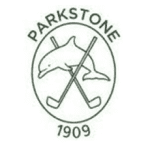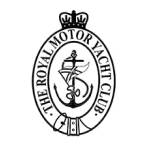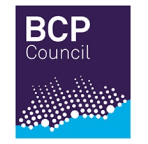5 Golf Club Heating Fixes That Lower Energy Costs
Hidden heating costs are undermining your club’s performance.
Is your golf club’s heating system quietly draining your budget? Many clubhouses across Southern England still rely on ageing, inefficient systems. These systems drive up fuel bills, underperform during colder months, and disrupt the member experience. Cold locker rooms, uneven lounge and restaurant temperatures, or strange energy spikes often mean your heating system needs help.
The good news? You don’t have to commit to a complete overhaul to make a difference. With over 60 years of experience helping commercial heating clients, we’ve found five easy fixes. These solutions can cut your golf club heating bills and keep your clubhouse warm, compliant, and cosy throughout the year.
Highlights
- Clubs that move to condensing boilers could save £600 a year. This is thanks to better heating efficiency and less wasted fuel.
- Smart thermostats, zoning, and insulation fixes are quick and easy ways to lower energy bills and improve control.
- Regular maintenance and Legionella compliance keep clubhouse heating systems safe and reliable. They also help avoid costly breakdowns.

1. Upgrade Outdated Heating Systems
Quick Fix: Swapping old boilers for high-efficiency condensing ones can boost energy performance by as much as 30%.
If your boiler is over 10–15 years old, it will likely operate at just 65–70% efficiency. That means nearly a third of your energy spending could disappear through waste heat. Modern condensing boilers offer a significant benefit. They capture and recycle heat, unlike older systems that simply let it go to waste. In fact, Uswitch says that switching from a non-condensing boiler to a condensing one can save a medium-sized commercial property up to £600 each year. This means a clear return on investment in just a few heating seasons.
When planning a system upgrade, it’s essential to take a strategic approach to avoid unnecessary disruption. Our Commercial Boiler Installation Checklist for Site Managers details what you need to do. It guides you from picking the right boiler to getting your site ready and scheduling installation during off-peak club hours. If you’re not sure if it’s time to replace your system, check out our guide on How Often Should A Commercial Boiler Be Replaced. It guides you on warning signs, performance benchmarks, and maintenance history. This helps you make an informed decision without any guesswork.
Upgrading isn’t just about efficiency, either. Many modern systems work with smart controls and zoning. This helps clubs manage energy better and reduce carbon over time. After all, sustainability is a key concern for many clubs!
2. Install Smart Thermostats for Smarter Control
Quick Fix: Automate your heating schedule based on occupancy and time of day to avoid wasted energy.
Traditional thermostats offer minimal flexibility. If your clubhouse is being heated to 21°C overnight or during low-use hours, that’s energy quite literally going up the wall. Smart thermostats tackle this by learning how you use your space. They offer remote access and adjust in real time. This means they can adapt to early-morning golfers, weekend events, or changes in occupancy throughout the seasons.
Smart thermostats work with zoning controls and multi-room systems. This means you can heat each room accurately. Research from Carbon Trust and other UK energy bodies shows that smart controls can cut energy use by 10–12% each year in commercial spaces. This saving is crucial for golf clubs, where visitor numbers can change.
We provide various programmable thermostat options made for commercial settings, such as clubhouses. Our team can install and configure these systems around your club’s operating hours, ensuring minimal disruption. They’re also ideal for integration with future upgrades like smart zoning or remote monitoring.


3. Improve Insulation and Stop Heat Loss
Quick Fix: Strengthen insulation in lofts, pipes, windows, and doors to maintain heat and reduce system strain.
Many golf clubs—especially those with older buildings—suffer from poor insulation. Loft spaces often lack proper thermal barriers. Window seals can wear down, and gaps in the flooring or pipes allow warm air to escape quickly. As a result, your heating system works harder to compensate, consuming more fuel and costing more over time.
The UK government’s guide on energy efficiency says that basic insulation upgrades can help businesses save £200 to £300 each year. The savings depend on the property’s size and structure. However, these savings could be even higher for a golf clubhouse with multiple wings or high ceilings.
We usually advise clubs to make simple changes first. They can draught-proof doors, install thermal curtains in lounges or dining rooms, and apply pipe lagging in service areas. Regular inspections are beneficial. During scheduled maintenance, we often find insulation issues that can be easily fixed. Learn more in our guide to why routine heating servicing is essential, where we outline how minor adjustments can lead to major savings.
4. Schedule Regular Preventative Maintenance
Quick Fix: Book planned servicing to boost system efficiency, reduce downtime, and stay compliant.
Heating systems work harder than most realise, especially in multi-use buildings like golf clubs. Over time, limescale builds up in heat exchangers, pressure levels drop, and parts begin to wear. Without regular servicing, minor problems can hurt efficiency. They can also increase fuel use and make breakdowns more likely, which can be costly.
A well-kept system lasts longer, works better, and keeps your clubhouse warm when needed. Our engineers perform regular heating system maintenance. They clean burners, check boiler pressure, service pumps, and calibrate controls. These visits can be scheduled around your calendar to avoid disrupting members or bookings.
We perform health and safety compliance checks during maintenance. Most importantly, we carry out Legionella risk assessments. These are required by law for any club with showers, spas, or changing facilities. If you haven’t booked one recently, our Legionella testing service ensures your water systems are safe, compliant, and low-risk.
Routine maintenance does more than prevent emergencies. It also protects your investment and helps keep your heating bills low throughout the year.


5. Introduce Heating Zones for Better Control
Quick Fix: Divide your clubhouse into separate zones so you only heat the areas in use.
Heating an entire clubhouse as one unit rarely makes sense. Golf clubs often contain high-traffic areas—like the bar or restaurant—and lower-use spaces like meeting rooms or storerooms. Without zoning, your boiler is likely working overtime to heat spaces that don’t need it.
You can split your building into distinct heating zones by using thermostatic radiator valves (TRVs), programmable thermostats, or a more advanced Building Management System (BMS). That means warm lounges during events, cooler temps in unused areas, and total control across the building.
Zoning isn’t just about efficiency—it also improves comfort. Members won’t complain about overheated function rooms or cold locker areas. It’s a cost-effective, scalable solution for clubs of all sizes. If your current system doesn’t support zoning, we can design a bespoke solution for your commercial heating system upgrade.
Why Is Golf Club Heating Important?
Heating is important at golf clubs. It helps lower costs, ensures comfort, and meets safety requirements. A properly maintained heating system runs smoothly during peak times. This helps provide a positive experience for members and prevents any compliance issues.
Here’s Why it Matters
- Energy Efficiency: Modern systems use less fuel and offer smarter control, reducing bills and carbon impact.
- Member Satisfaction: A consistently warm clubhouse enhances comfort and supports retention.
- Operational Continuity: Scheduled maintenance avoids disruptive system failures during busy events.
- Compliance: Clubs meet legal requirements for gas safety and water hygiene, including Legionella testing.
Getting your heating system right isn’t just about warmth. It’s about running a smooth, cost-effective club year-round.

Make Smart Heating Decisions That Pay Off
Lower bills. Happier members. Zero disruption.
Every pound saved on heating is a pound reinvested in your club. Upgrading an old boiler, zoning your clubhouse, or sealing heat loss points are all simple fixes. These five solutions are easy to apply and can reduce energy waste.
Key Takeaways
- Modern heating systems reduce running costs and improve reliability.
- Smart thermostats and zoning help you heat only the spaces that matter.
- Routine maintenance and insulation preserve system health and prevent surprise breakdowns.
Ready to lower your heating costs? We offer free, no-pressure heating audits tailored to golf clubs. Our engineers will evaluate your system, spot saving chances, and design a plan that suits your operations. Make this the year your heating system works harder – so you don’t have to.
Call us today on 01202 745189 or book your heating audit online – no obligation, limited seasonal availability.













